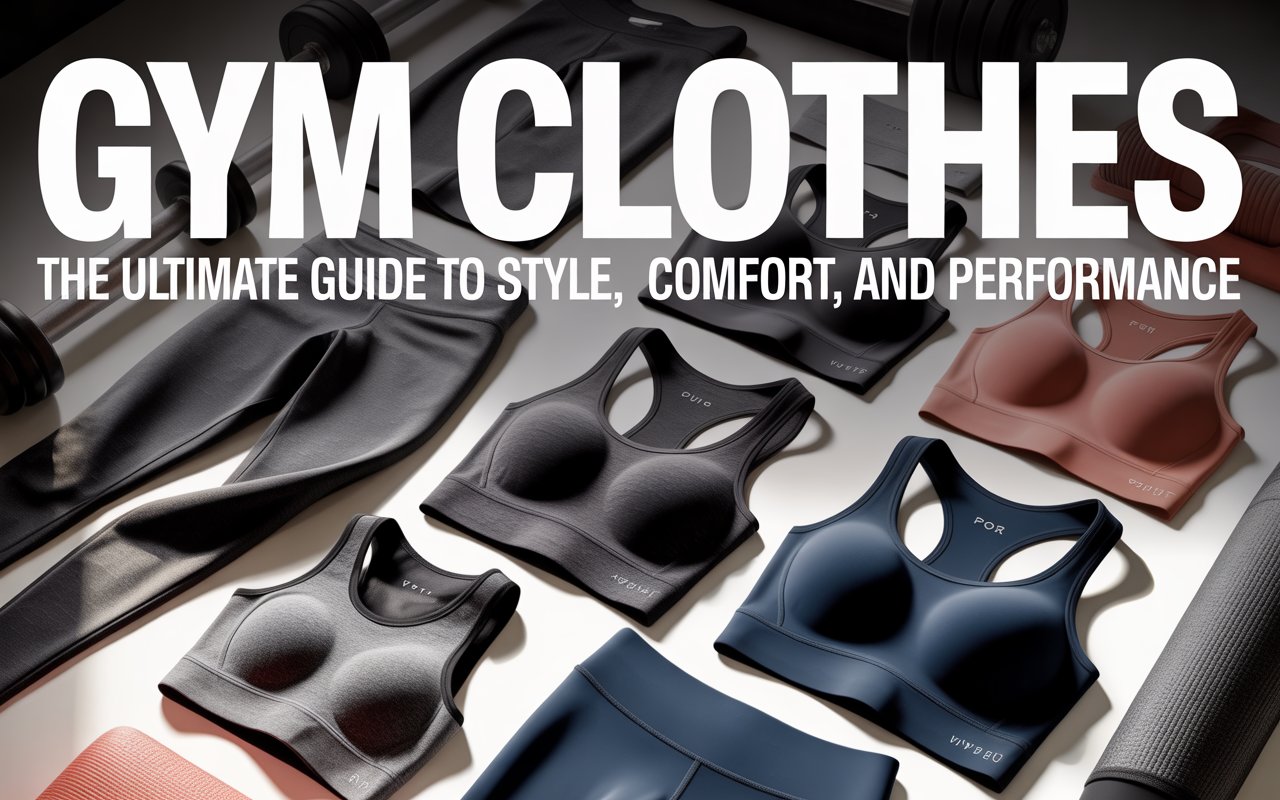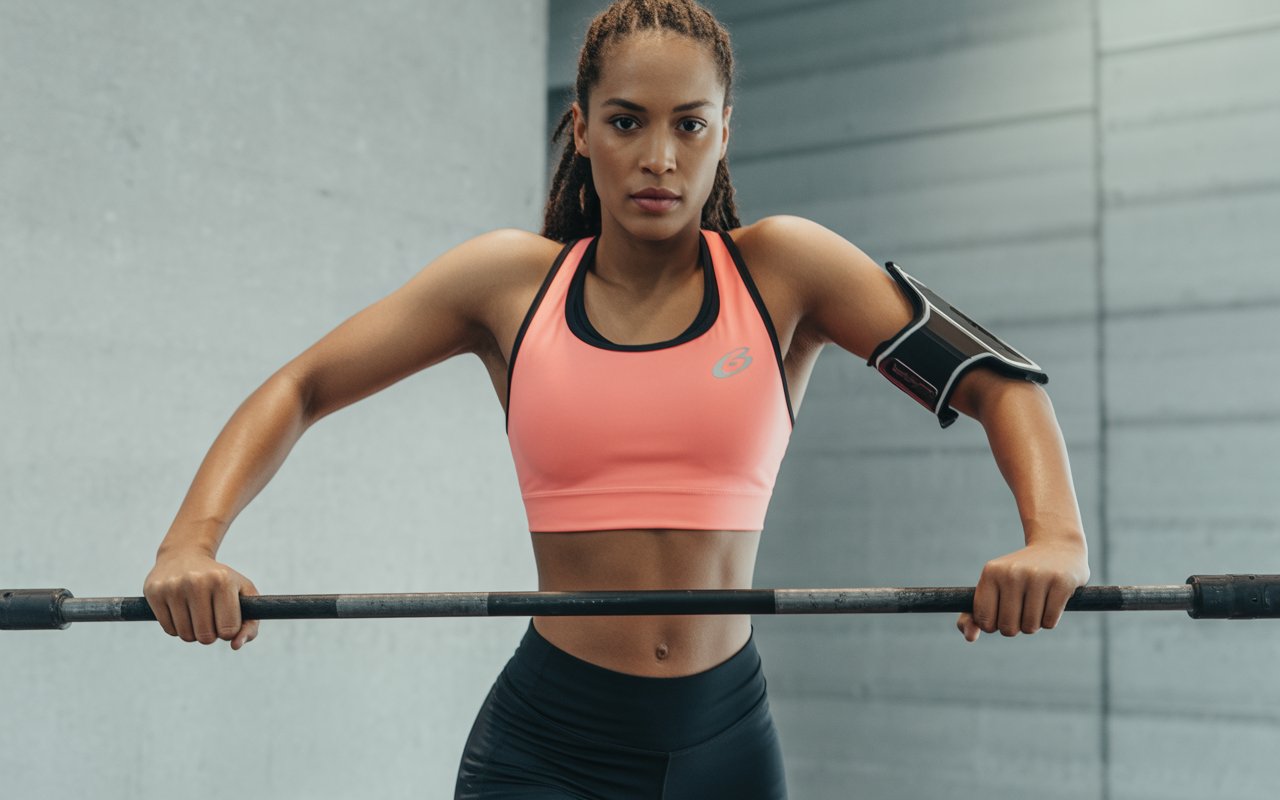When you walk into a gym, the first thing you might notice isn’t always the weights or the treadmills — it’s what people are wearing. Gym clothes have evolved from basic sweatpants and cotton tees to high-performance gear designed for comfort, flexibility, and style. Whether you’re a fitness enthusiast, a casual jogger, or someone just starting their wellness journey, the right gym attire can make a huge difference in your performance and motivation.
In this comprehensive guide, we’ll explore everything you need to know about gym clothes — from fabrics and fits to trends and tips on how to choose the best outfit for your workouts. So, let’s dive in and discover why what you wear in the gym truly matters.
Why Gym Clothes Matter More Than You Think
Ever tried running in jeans or doing yoga in a stiff cotton shirt? It’s uncomfortable and distracting, right? The truth is, gym clothes aren’t just about looking good — they’re about feeling good and performing better.
The right attire provides support, regulates body temperature, reduces the risk of chafing, and even helps prevent injuries. Plus, when you feel confident in your outfit, you’re more likely to push yourself harder. Think of it as your “armor” for self-improvement — clothing that boosts both your body and your mindset.
The Science Behind the Fabric
Let’s talk materials — the real heroes of workout wear. The fabric of your gym clothes plays a major role in comfort and performance.
1. Moisture-Wicking Materials
Synthetic fabrics like polyester, nylon, and spandex are commonly used because they wick away sweat from your skin, keeping you dry and cool. These materials pull moisture to the outer layer of the fabric, where it can evaporate quickly.
2. Cotton: The Classic Choice
While cotton is soft and breathable, it tends to absorb sweat instead of releasing it. This can make your clothes feel heavy and damp after a tough workout. Still, it’s a good choice for low-intensity exercises or casual gym sessions.
3. Compression Fabrics
Compression gear supports muscles and improves blood circulation. These snug-fitting clothes can reduce soreness and fatigue, helping you recover faster after workouts.
Dressing for Different Types of Workouts

Your gym outfit should match your activity. Just as you wouldn’t wear flip-flops to hike, you shouldn’t wear the wrong gear for your workout.
1. For Strength Training
When lifting weights, flexibility and comfort are key. Opt for breathable tanks, fitted T-shirts, and stretchable shorts or leggings. Avoid baggy clothing that could get caught on equipment.
2. For Cardio Workouts
Running, cycling, or HIIT sessions call for lightweight, sweat-resistant materials. Choose tops that allow ventilation and bottoms with secure waistbands.
3. For Yoga or Pilates
Stretch-focused workouts need stretchy, body-hugging attire. High-waisted leggings, supportive sports bras, and soft tops that stay in place during poses are ideal.
4. For Outdoor Training
If you’re running outside or doing bootcamp sessions, layering is essential. Wear breathable base layers, weather-resistant jackets, and UV-protective fabrics to handle varying conditions.
Choosing the Right Fit
Fit is everything when it comes to gym wear. Clothes that are too tight can restrict movement, while those that are too loose can cause distractions or discomfort.
-
Tops: Look for fitted but flexible tops that move with your body.
-
Bottoms: Ensure leggings or shorts stay in place during movement.
-
Footwear: Shoes should offer the right support for your workout type — running shoes for cardio, cross-trainers for mixed workouts, and flat soles for lifting.
Remember, the best fit feels like a second skin — snug but not suffocating.
The Role of Color and Style
Sure, gym clothes are functional, but style matters too. Wearing clothes that make you feel good can boost confidence and motivation.
-
Bright colors can energize your mood.
-
Dark tones like black or navy create a sleek, slimming effect.
-
Patterns and prints add personality and fun to your workout look.
Some people even plan “gym outfits” in advance because feeling stylish encourages consistency. It’s like dressing for success — only this time, your success is your health.
Gym Clothes for Men

Men’s gym wear has come a long way from plain tank tops and basketball shorts.
1. Tops
From performance tees to sleeveless tanks, men can choose tops that enhance breathability and movement. Moisture-wicking fabrics help reduce sweat buildup.
2. Bottoms
Compression shorts under regular shorts offer both support and comfort. Joggers are great for warmups or outdoor runs.
3. Accessories
Sweatbands, weightlifting gloves, and proper socks add functionality and flair.
Gym Clothes for Women
Women’s gym attire combines practicality and style effortlessly.
1. Sports Bras
A good sports bra is a must-have. It provides essential support and reduces discomfort during movement. There are various impact levels — low for yoga, medium for cycling, and high for running.
2. Leggings and Shorts
High-rise leggings or fitted shorts provide flexibility and prevent slipping during exercise. Look for squat-proof fabrics for confidence during movement.
3. Tops and Layers
Tank tops, crop tops, and long sleeves made from breathable materials are perfect choices. Adding a light jacket or hoodie can complete the look.
The Rise of Athleisure: When Gym Clothes Go Beyond the Gym
Today, gym wear isn’t confined to the gym anymore. The term “athleisure” describes clothing that merges athletic functionality with casual fashion.
You’ve probably seen people wearing leggings, joggers, and performance sneakers while shopping or meeting friends. Athleisure has become a lifestyle — comfortable, stylish, and versatile. It’s fitness fashion meeting everyday wear.
Brands like Lululemon, Nike, and Gymshark have capitalized on this trend, creating clothes that transition seamlessly from a workout session to a coffee date.
Eco-Friendly and Sustainable Gym Wear

The fitness world is also turning green — not just in smoothie bowls but in sustainable clothing choices.
Brands now use recycled polyester, organic cotton, and bamboo fibers to create gym wear that’s gentle on the planet. Some even incorporate water-saving dyes or biodegradable packaging.
Choosing eco-friendly activewear supports both your wellness goals and environmental health. It’s a small change with a big impact.
How to Care for Your Gym Clothes
Your gym clothes go through a lot — sweat, stretching, and frequent washing. To keep them in top shape:
-
Wash in cold water: Helps preserve elasticity and color.
-
Avoid fabric softeners: They can clog the fabric’s pores and reduce moisture-wicking ability.
-
Air dry: High heat damages synthetic fibers.
-
Turn inside out: This reduces wear on the outer surface.
Proper care means your clothes will last longer and stay fresh — a win for your wallet and wardrobe.
Common Mistakes to Avoid When Choosing Gym Clothes
Even the best gym-goers can make fashion or comfort mistakes. Here are a few to watch out for:
-
Wearing cotton for high-sweat workouts – it gets heavy and sticky.
-
Ignoring proper shoe support – can lead to injuries.
-
Choosing fashion over function – style matters, but performance comes first.
-
Not replacing old gear – worn-out fabrics lose support and comfort.
A quick rule of thumb? If your gym outfit distracts you from your workout, it’s time for an upgrade.
Investing in Quality: Why It’s Worth It
It’s tempting to grab the cheapest leggings or T-shirt, but investing in high-quality gym clothes pays off. Premium fabrics last longer, fit better, and perform well under stress.
Good workout gear isn’t a luxury — it’s a tool that supports your fitness journey. It’s like putting premium fuel in your car; the performance is noticeably better.
Confidence Starts with Comfort
Ultimately, gym clothes are more than fabric and stitching — they’re confidence boosters. When you’re comfortable and proud of what you’re wearing, you walk taller, lift heavier, and push harder.
It’s not vanity — it’s psychology. Feeling good in your outfit reinforces your motivation to move. And when that happens, progress follows naturally.
Conclusion
Gym clothes have come a long way from the baggy T-shirts of the past. Today, they’re the perfect blend of technology, comfort, and style. From choosing moisture-wicking fabrics to understanding the importance of fit, every detail plays a role in how you perform and feel.
The best gym clothes aren’t just about brand names — they’re about finding what supports your body, your routine, and your confidence. So the next time you get ready for the gym, think beyond “what looks good.” Think about what helps you feel your best — because that’s where real progress begins.
FAQs
1. What type of fabric is best for gym clothes?
Moisture-wicking fabrics like polyester, nylon, and spandex are ideal because they keep sweat away and allow your skin to breathe.
2. How often should I replace my gym clothes?
Typically every 6–12 months, depending on wear and frequency of washing. Signs like stretched fabric or lingering odors mean it’s time for new gear.
3. Can I wear gym clothes casually?
Absolutely! The athleisure trend has made it fashionable to wear gym clothes for everyday activities, from errands to casual outings.
4. Are expensive gym brands worth it?
Higher-end brands often use better materials and technology, which can enhance comfort and longevity. However, affordable options can work just as well if they fit well and feel comfortable.
5. How do I prevent my gym clothes from smelling bad?
Wash them immediately after use, avoid leaving them in your gym bag, and use mild detergents designed for activewear to eliminate odor buildup.













